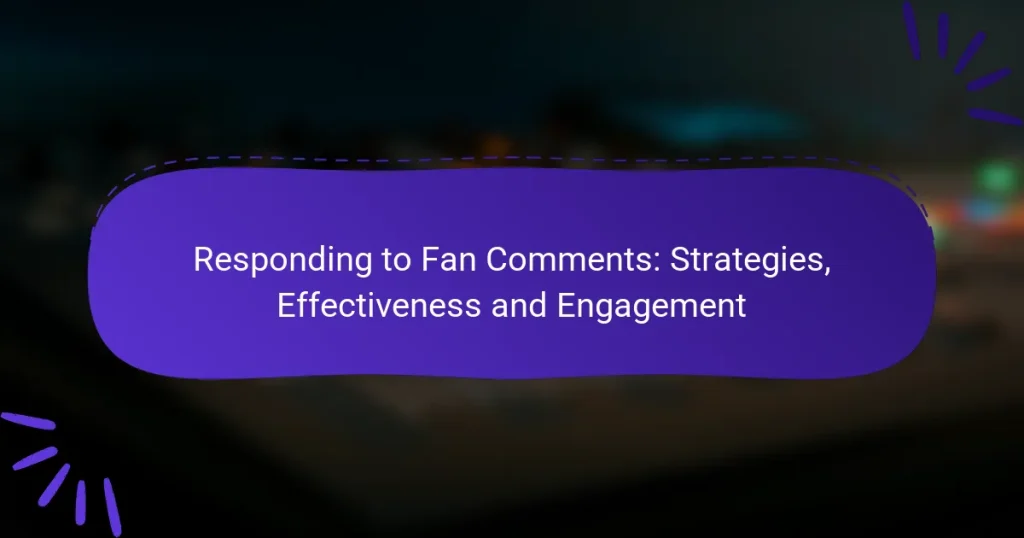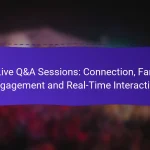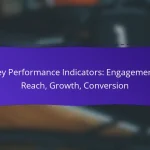Responding to fan comments is a crucial strategy for brands aiming to enhance engagement and build loyalty. By personalizing replies, addressing concerns promptly, and incorporating fan feedback, brands can create a sense of community that encourages active participation. This approach not only strengthens emotional ties but also demonstrates that the brand values its audience’s opinions.

How can brands effectively respond to fan comments?
Brands can effectively respond to fan comments by personalizing their replies, engaging in a timely manner, and addressing concerns directly. These strategies foster a sense of community and enhance customer loyalty, ultimately leading to a more engaged audience.
Personalized responses
Personalized responses show fans that their comments are valued. Addressing users by their names and referencing their specific comments can create a stronger connection. For example, instead of a generic “Thanks for your comment,” a response like “Thank you, Sarah! We appreciate your feedback on our new product!” feels more genuine.
Using tailored responses can increase engagement rates significantly. Brands should aim to respond to at least 20-30% of comments with personalized messages to foster a loyal community.
Timely engagement
Timely engagement is crucial in maintaining an active dialogue with fans. Responding within a few hours can demonstrate that a brand values its audience’s input. Aim for responses within 24 hours to keep the conversation flowing and show attentiveness.
Utilizing social media management tools can help brands monitor comments and respond promptly. This proactive approach can prevent negative sentiments from escalating and enhance overall brand perception.
Utilizing humor
Incorporating humor into responses can make interactions more enjoyable and memorable. A light-hearted reply can diffuse tension and create a more approachable brand image. For instance, responding to a playful comment with a witty remark can encourage further engagement.
However, brands should be cautious with humor, ensuring it aligns with their brand voice and is appropriate for the context. Misunderstandings can lead to backlash, so it’s essential to know your audience well.
Addressing concerns directly
Addressing concerns directly is vital for maintaining trust. When fans express dissatisfaction, acknowledging their feelings and providing solutions can turn a negative experience into a positive one. For example, if a customer complains about a product issue, a brand should respond with an apology and offer a replacement or refund.
Brands should prioritize transparency in these interactions. Being open about how they plan to resolve issues can enhance credibility and reassure fans that their opinions matter.
Encouraging further interaction
Encouraging further interaction can deepen relationships with fans. After responding to a comment, brands can ask follow-up questions or invite fans to share more thoughts. For example, “What features would you like to see in our next product?” invites ongoing dialogue.
Brands should also consider creating polls or contests that prompt fans to engage further. This not only boosts interaction but also provides valuable insights into customer preferences and interests.
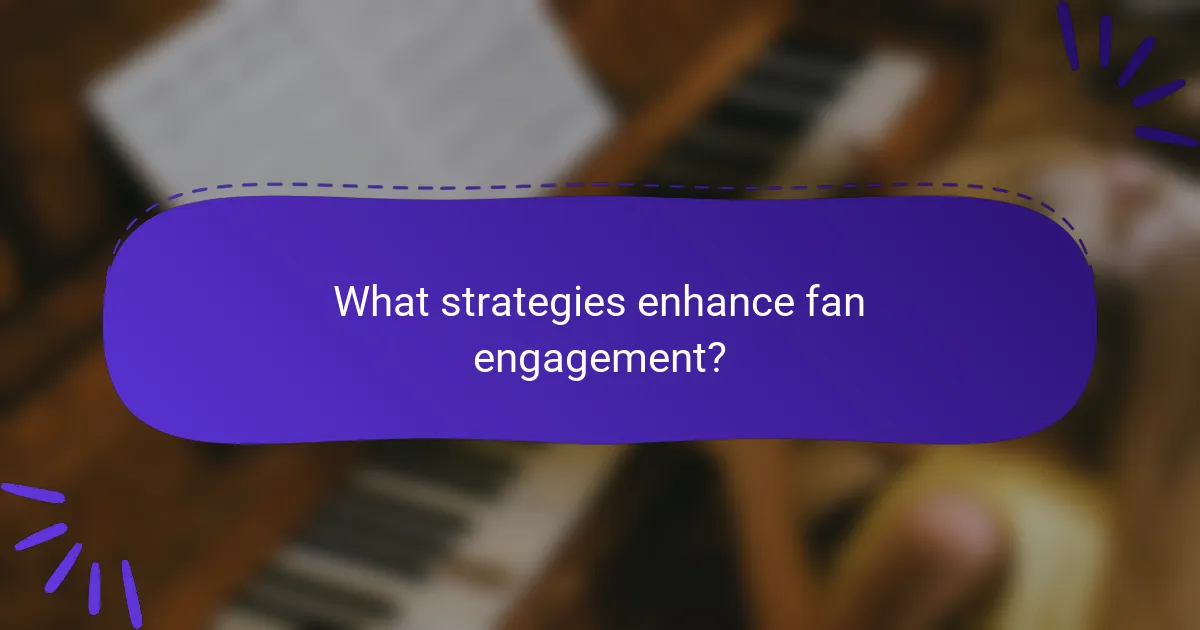
What strategies enhance fan engagement?
Effective strategies for enhancing fan engagement include creating community-driven content, utilizing social media platforms, and incorporating fan feedback into products. These approaches foster a sense of belonging and encourage active participation among fans.
Creating community-driven content
Community-driven content involves producing material that resonates with fans’ interests and experiences. This can include user-generated content, fan art, or collaborative projects that invite contributions from the audience. By showcasing fan creations, brands can strengthen connections and encourage further participation.
Consider hosting contests or challenges that motivate fans to share their work. For example, a music artist might ask fans to submit videos of themselves covering a song, which can then be featured on the artist’s social media channels. This not only engages fans but also promotes a sense of community.
Utilizing social media platforms
Social media platforms are essential tools for engaging with fans in real-time. Brands can leverage platforms like Instagram, Twitter, and TikTok to share updates, respond to comments, and create interactive content such as polls or Q&A sessions. This direct interaction fosters a more personal connection with the audience.
To maximize engagement, brands should tailor their content to each platform’s unique features. For instance, short, catchy videos work well on TikTok, while detailed posts may be more suitable for Facebook. Regularly monitoring engagement metrics can help identify what resonates most with fans.
Incorporating fan feedback into products
Incorporating fan feedback into products demonstrates that a brand values its audience’s opinions. This can involve surveys, focus groups, or simply monitoring comments and suggestions on social media. By actively seeking and implementing fan input, brands can create products that better meet their audience’s needs.
For example, a video game developer might release a beta version of a game and solicit feedback on gameplay mechanics. This not only improves the final product but also makes fans feel invested in the development process. Regularly updating fans on how their feedback has influenced changes can further enhance engagement.
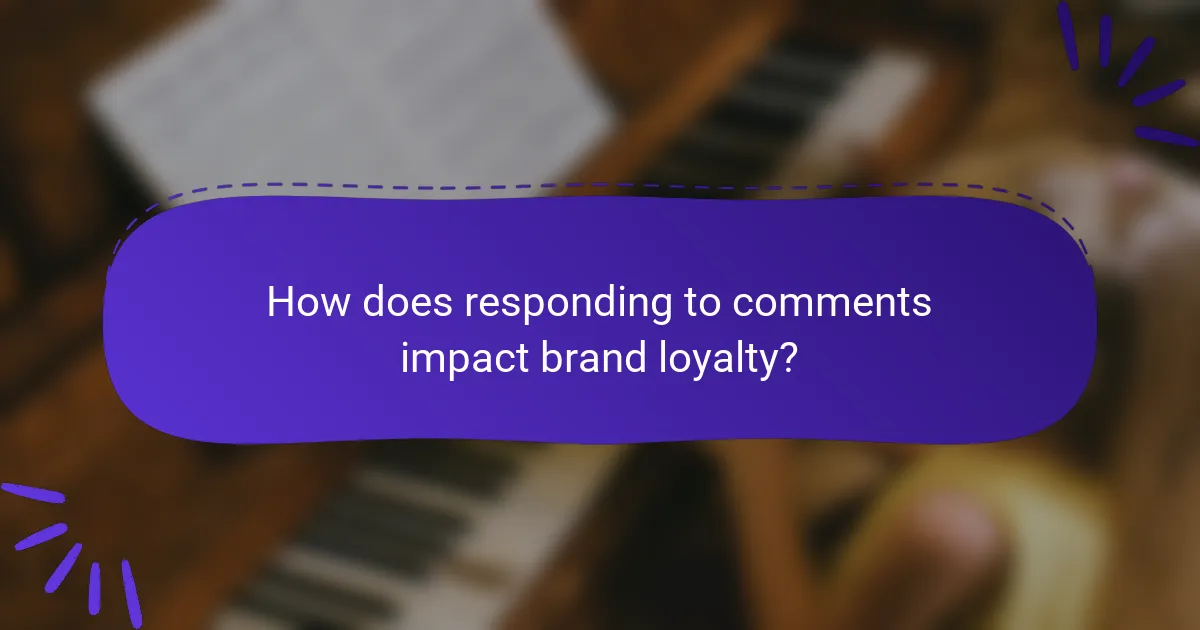
How does responding to comments impact brand loyalty?
Responding to comments significantly enhances brand loyalty by fostering a sense of community and connection between the brand and its customers. Engaging with fans shows that the brand values their opinions, which can lead to stronger emotional ties and long-term loyalty.
Strengthens customer relationships
When brands actively respond to comments, they create a dialogue that strengthens customer relationships. This interaction makes customers feel heard and appreciated, which can transform a one-time buyer into a loyal advocate. Personalized responses can further enhance this connection, making customers more likely to share their positive experiences with others.
For example, a simple acknowledgment of a customer’s feedback can lead to a more engaged community. Brands that take the time to reply to both positive and negative comments demonstrate their commitment to customer satisfaction.
Increases brand trust
Engaging with customers through comments builds trust in the brand. When customers see that a brand is responsive and transparent, they are more likely to believe in its integrity and reliability. This trust can be crucial, especially in competitive markets where consumers have many options.
Brands can increase trust by addressing concerns promptly and providing clear, honest answers. For instance, if a customer raises a concern about a product, a timely and thoughtful response can alleviate worries and reinforce the brand’s credibility.
Encourages repeat purchases
Responding to comments can lead to increased repeat purchases as customers feel a stronger connection to the brand. When consumers feel valued and engaged, they are more likely to return for future purchases. This can be particularly effective in industries where customer loyalty is essential for sustained success.
To encourage repeat business, brands should consider implementing loyalty programs or exclusive offers for customers who engage with them. For example, rewarding customers who leave comments with discounts or early access to new products can incentivize ongoing interaction and purchases.
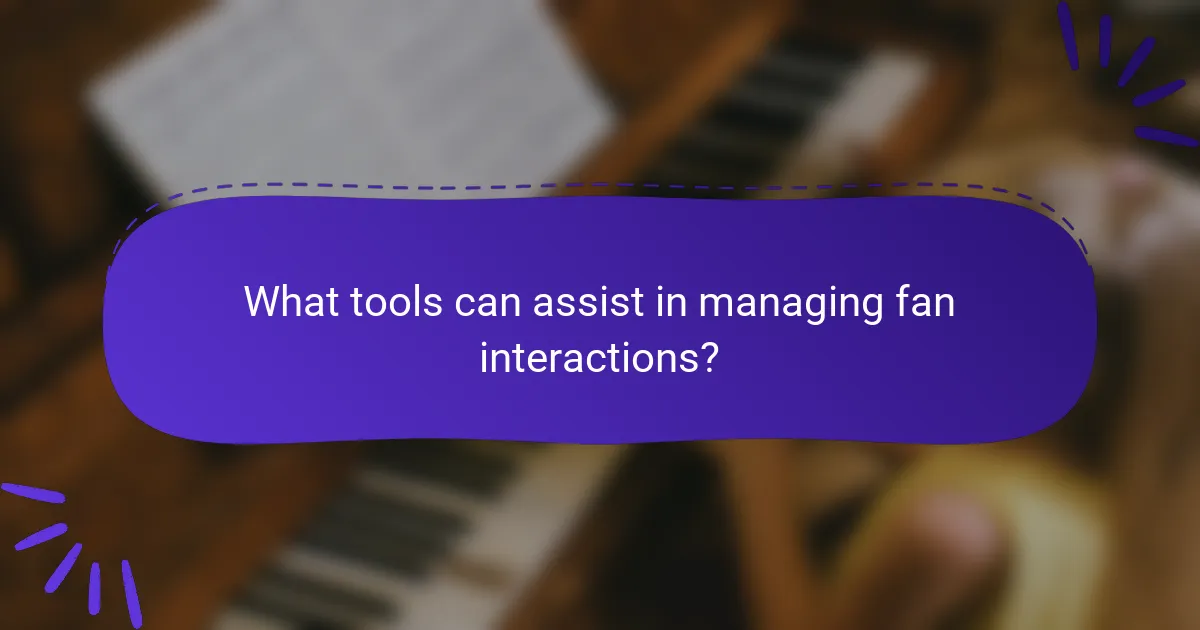
What tools can assist in managing fan interactions?
Several tools can effectively assist in managing fan interactions, enhancing engagement and streamlining responses. Utilizing the right platforms can help monitor comments, analyze audience behavior, and provide customer support efficiently.
Hootsuite for social media monitoring
Hootsuite is a powerful tool for social media monitoring, allowing you to track mentions, comments, and messages across various platforms. By setting up streams for specific keywords or hashtags, you can quickly respond to fan interactions and engage with your audience in real-time.
To maximize Hootsuite’s effectiveness, regularly review your streams and prioritize interactions based on urgency or sentiment. This proactive approach helps maintain a positive relationship with fans and can lead to increased loyalty.
Sprout Social for analytics
Sprout Social provides robust analytics that help you understand audience engagement and interaction patterns. By analyzing metrics such as response times, engagement rates, and audience demographics, you can tailor your content and responses to better meet fan expectations.
Consider using Sprout Social’s reporting features to track performance over time. This data can inform your strategy and highlight areas for improvement, ensuring your interactions are both effective and relevant.
Zendesk for customer support
Zendesk is an excellent solution for managing customer support inquiries from fans. It centralizes communication across channels, allowing you to respond to questions and issues efficiently. With features like ticketing and automated responses, you can streamline support processes and improve response times.
To enhance your use of Zendesk, categorize inquiries based on common issues and create a knowledge base for frequently asked questions. This approach not only speeds up response times but also empowers fans to find answers independently, improving overall satisfaction.
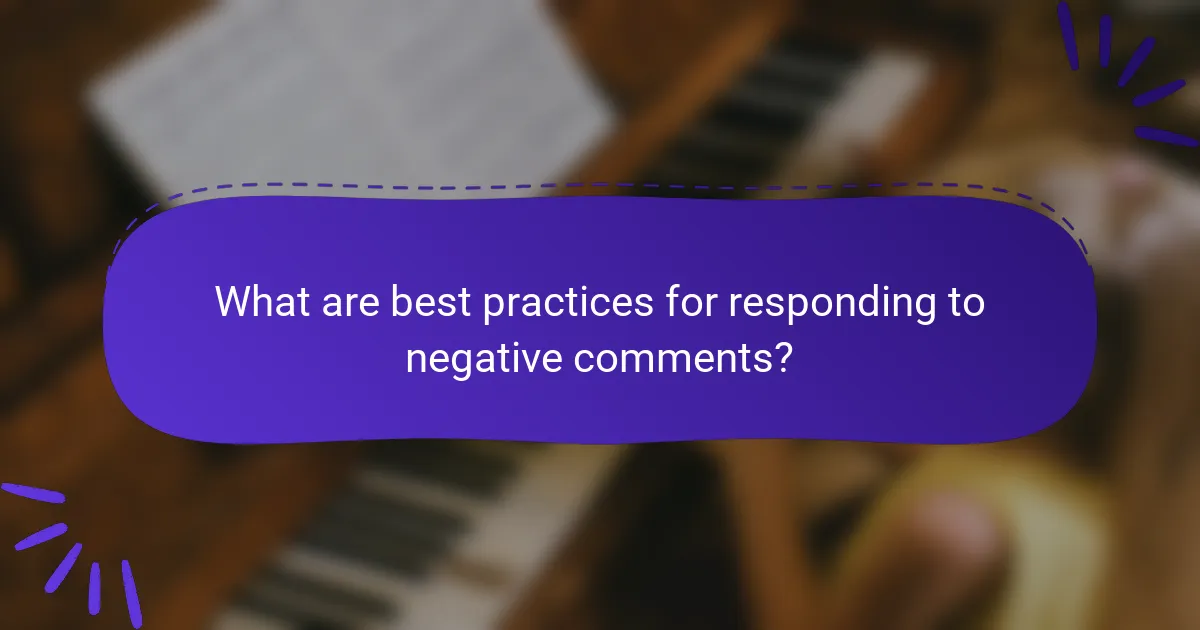
What are best practices for responding to negative comments?
Best practices for responding to negative comments include addressing the issues quickly and maintaining a professional tone. These strategies help to mitigate damage to your reputation and can turn a negative experience into a positive interaction.
Address issues promptly
Responding to negative comments in a timely manner is crucial. Aim to reply within a few hours to a day, as this shows that you value feedback and are committed to resolving issues. Delayed responses can exacerbate the situation and lead to further dissatisfaction.
When addressing the issue, acknowledge the concern raised by the commenter. For example, if a customer complains about a delayed shipment, express understanding and provide an update on their order status. This approach helps to build trust and demonstrates your willingness to take responsibility.
Maintain professionalism
Professionalism is key when responding to negative comments. Always use respectful language, even if the comment is harsh or unfair. Avoid getting defensive or engaging in arguments, as this can escalate the situation and reflect poorly on your brand.
Consider using a template for responses to ensure consistency in tone and messaging. For instance, start with an apology, explain how you will address the issue, and invite the commenter to discuss further in private if necessary. This not only resolves the immediate concern but also shows other readers that you handle criticism gracefully.
